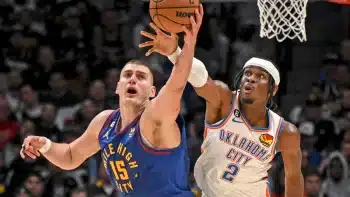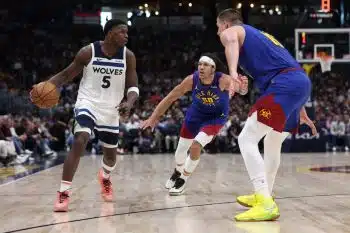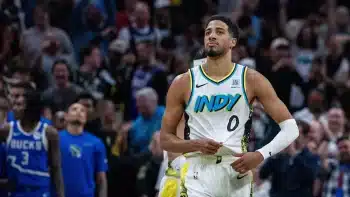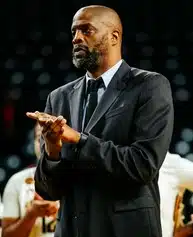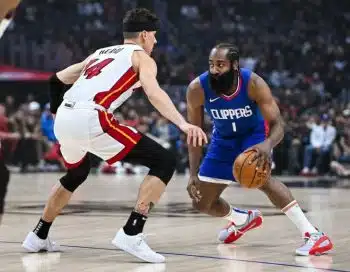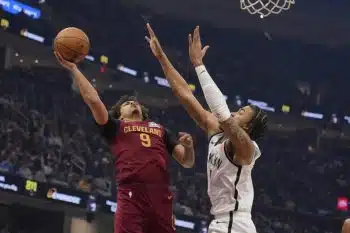NBA
2016 Eurocamp Scouting Report: Days 1 & 2
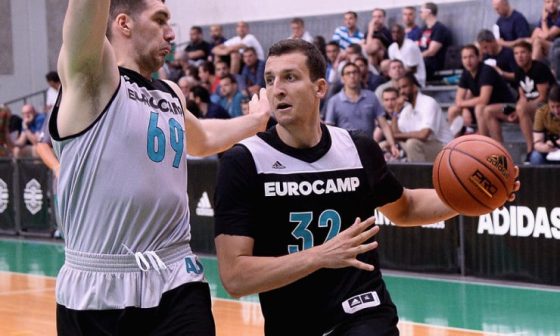
With the NBA Draft less than two weeks away, many key NBA talent evaluators have descended upon Treviso, Italy, for the annual Adidas Eurocamp, a spotlight event featuring 40 international players (many of whom are draft-eligible) competing in games and drills.
Here were some of the standouts from the first two days.
Paul Zipser #32 – One of the most experienced players in the Treviso Camp, Zipser plays focused and locked in. He does a good job of making the simple play. He knows who he is as a player and plays within himself, rarely trying to do too much. He is a very effective and mobile pick-and-pop forward, which is a desired skill set with the way the NBA is increasingly utilizing small-ball lineups. He is a skinny screener, meaning he doesn’t do a great job of head hunting the playmaker’s defender, popping his feet (coming to a jump stop so he doesn’t set a moving screen) and cracking the defender on the screen. He sets narrow screens, often times never creating contact with the defender. When he is paired with a playmaker who can come off the ball screen and engage his defender, he can be a knockdown pick-and-pop man. He aggressively attacks his defender off a close out and initiates contact with his defender, which allows him to be a physical straight line driver. He has to work on his dribble counters to become more of an effective handler in “short roll” situations and when high-level defenders cut his straight line drives off. He looked comfortable on his one-dribble pull up when defenders took away his straight line drive.
Additionally, Zipser was vocal on defense, calling the ball-screen coverage and off-ball screens. He is quick, physical and tough enough to defend power forwards in a perimeter isolation situation. But when he switches onto guards, he needs to play with active hands above the ball and arms wide to take away passing angles and to create a defensive presence while building a wall to take away paint penetrations. Laterally, he can’t guard NBA small forwards. He has to play the four at the NBA level. He plays with an athletic mentality without being an elite athlete, which is not very common in European players. Because of his mismatch as a pick-and-pop four, he can create long closeouts, which allow him to pump fake and attack. He can really develop a knack for getting fouled with his shooting skill set and physical mindset.
Petr Cornelie #43 – Cornelie is mobile and plays with a high motor. He is an active, out of area rebounder. Additionally, he is an early-effort rebounder, meaning when a player has started his shooing motion, he is flying in for the rebound, instead of standing on the perimeter waiting for an invitation to the rebounding party. He hustles to the rim from wherever he is when the shot goes up. He looks for tip-dunk and tip-in opportunities. He uses his length to contest shots and disrupt the release point on shooters from the outside, and has the discipline to block shots within the paint without swinging violently at the ball, which decreases the likelihood of fouling on the block attempt. He has the mobility and anticipation to be a weak side shot blocker and plays with the motor and effort that is needed to be a trail shot blocker. He has a quick second jump, which allows him to effectively challenge multiple shots in the same defensive possession or miss his own shot and explode back up quicker than his defender for a put-back opportunity.
Furthermore, he is a great teammate – constantly clapping and pointing at teammates when he is on the bench and getting off the bench to embrace them when a timeout is called. He sets hard and physical screens, which often creates an offensive advantage for his team. He posts hard, but he goes to the dork fade against similarly sized players. While posting a guard on a switch, he tries to get to the midline for his hook shot. He has the touch and skill to shoot over both shoulders in these situations. Cornelie can also put it on the floor for two dribbles from the perimeter, but off of his sweeps and shot fakes, his first step is toward the short corner instead of attacking with his lead foot to the rim, which would allow him to take a scoring angle to the basket. He struggled to keep control of his dribble off of a quick attack on a closeout when the defender initiates contact with him. He does not absorb contact well when finishing around the rim either, as he often had to turn the angle of his body after taking contact from the defender to get his shot off instead of powering through the defender at the same angle for the finish.
His lack of upper body and core strength can be mistaken as a sign for softness, but he is not a soft player. He is an active communicator on defense, frequently calling coverages and actions. When he switches on to guards off of ball screens, he has to learn to be a defensive presence with his hands wide. His hands live by his side, instead of wide in the air taking away passing angles. He has the ability and motor to become a player who can consistently make two plays (for example, blocking a shot from the weakside or trail position and then racing the floor for a tip dunk). He can defend pivots and fakes from the post, but is antsy on his feet when defending a guard on the perimeter. He needs to learn to use his length to create a cushion where he is still close enough to disrupt the shot and contain off the dribble.
Kenan Sipahi #11 – Kenan is a point guard with great size. He is crafty playing off pick-and-rolls, using in and outs and change of direction to cut back off of the pick and engage the big defender. However, he is not a great shooter. He brings the ball over his head, causing him to shoot the ball with the motion of a catapult, which is why his shot is so flat. Opponents will often go under on in pick-and-roll coverages in order to expose his poor shooting. One major way he can improve his perimeter shooting is increasing his arch.
Kenan is not an explosive athlete and doesn’t have blazing speed, but he plays with an effective change of pace in the half court. Even though he doesn’t have elite level open court speed, he has good vision in the open court and is willing to pitch the ball head. He is also one of those point guards who acts as a coach on the floor. He also does a good job of making an effort to defend, but he doesn’t have the lateral quickness to defend many of the explosive guards at the NBA level.
Leon Kratzer #33 – Kratzer has a role as a screener, roller and rebounder. He sets hard and physical screens. Since he does not have great touch outside of seven feet, he has to learn race on the role off of the pick, and role to seal (meaning when the play maker comes off the pick, he has to be able to create a passing angle for the play maker by racing on the roll to the rim). Then, when the play maker skips the ball to the weak side 45 (free throw line extended on the wing), he has to find his defender, create contact and seal him to create a passing angle from the 45.
He is not a top athlete, and he doesn’t have a high level of skill with post footwork, so he has to learn to use angles, leverage and physicality by finding the defense and sealing them to create high percentage shots that don’t require great footwork or touch in the post. He has a good hook attacking the midline and an ability to counter baseline with a spin move. He communicates on defense. He is a very active rebounder and this is without question his best skill. However, he is a liability on the floor at the end of games since he is a poor free throw shooter.
Boris Dallo #48 – Dallo has great size for the point guard position, with very good court vision. He sees passing angles and plays before they develop. However, he can be a high turnover point guard since his teammates don’t read and process plays as quickly as he does and he throws passes based on where his teammates should go, not necessarily where they do go. He over dribbles at times, which allows the defense to recover, taking away the offensive advantage that was created off of the ball screen action. He has to learn to pitch the ball ahead and move the ball as quickly as possible to allow his team to take advantage of closeout defense.
Furthermore, he uses his physical size to finish well around the rim. He doesn’t have great mechanics on his shot as he brings the ball from the left side of his face. Specifically, he is moving the ball from the right side of his body at the beginning of his shot, to the left side of his body in the middle of his shot, back to the right side before the release and then up towards the basket at the point of release. He is a player teams are going to go under or switch on in ball-screen coverage and shrink the floor to force him to make outside shots.
Dallo doesn’t give great effort as an on-ball defender and is often times out of stance, resting on defense when he is in the help side position. Lacking high effort on defense combined with average lateral quickness makes him a defensive liability against guards with a great first step. He cannot defend his position at the elite level.
Michael Fusek #67 – For a 7’3 prospect who recently added muscle mass, I was impressed with Fusek’s upside. He is a player I can see drastically improving over the next two years if he joins a club that will create a development plan for him. He blocks shots without fouling, using his length to block and then secure the shot instead of trying to swat the ball out of bounds. However, he needs to work on improving his quickness in 10-20 foot races in the half court – racing to a help-side defensive position, racing to create separation from his defender when setting a ball screen, or racing for an out of area rebound.
Fusek has good mobility for his size, but he can really evolve as a prospect when he has great mobility for his size. He is often times behind the ball in transition, taking him away from his greatest scoring strength, which is being around the rim for lobs, dump downs and put backs. Because of this, he is often times caught on back to back possessions in between the three-point lines. He will get rebounds, make an outlet pass and then wait one to two seconds before really trying to race the floor. He has to be able to make an outlet pass and then immediately take off down the floor. He is a willing passer from the post. When he adjusts to his new body and embraces racing the floor, he will be very intriguing as a prospect.
Arnoldas Kulboka #37 – Kulboka has a good basketball IQ for his age. He is one of three players born in 1998 in the camp and one of the better wings at reading the defense on cuts and off ball screens. If he makes a backdoor cut, and you jump to the paint, he will read the defender and pop back to the three-point line for a wide open shot. If you shoot the gap on a pin down, he will read the defender and fade to the corner.
He has great shooting mechanics with a high arch that can develop to a consistent three-point threat from NBA range or further. He is a good athlete, but he has not embraced playing an athletic brand of basketball. He has a slight build and doesn’t play with a physical mind set. Very rarely is he making an out of area rebound or making an early effort to fly in from the wing for a tip dunk or tip in. He has the ability to become a great shot fake player with his ability to space the floor. He struggles to stay on his driving angle with contact from defender as he allows the contact to knock him off course of his scoring angle.
Kulboka can make plays for others off of two dribbles or less and is a willing passer, but he has to continue developing his ability to read help side defenders. Defensively, he can contain wings off of a close out and chest them up, keeping them out of the paint. But when he switches on to a guard in a pick-and-roll situation, he gets beat on late turns (i.e. when a playmaker turns the corner on a defender by the second dribble, giving them a direct driving angle to the rim). He is young, inexperienced and doesn’t have the extra gear yet where he can take over a game offensively. He has to develop his motor and physicality to continue to grow into a real high-level prospect, but the potential is there.
Basketball Insiders will have more updates as Eurocamp in Italy rolls on.
Ryan Pannone is the Associate Head Coach in Pro A Germany for the Hanau White Wings and the NBA director of development for the Pro Training Center, where he has worked with over 50 NBA players in the last 11 years. Ryan is also the director for offseason player development for the LG Sakers of the Korean Basketball League for the last two years and co-owner of www.BasketballHQ.com. Ryan been an assistant coach in the NBA D-League with the Erie BayHawks, NBA Summer League Assistant Coach for the Memphis Grizzlies and Assistant Coach for the Foshan Lions in the Chinese Basketball Association as well as serving a basketball adviser to Basketball Insiders.
